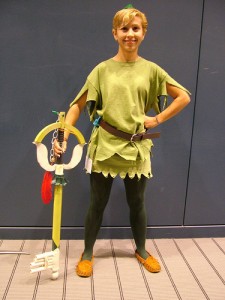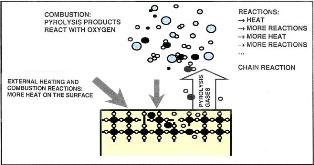 ABC recently featured Dulwich Hill Public School’s admirable philosophy program. Now, MJ (10) has been wandering around identifying paradoxes for the last week or so, probably inspired by W.S.Gilbert (represented by Toni Lamond and Jon English):
ABC recently featured Dulwich Hill Public School’s admirable philosophy program. Now, MJ (10) has been wandering around identifying paradoxes for the last week or so, probably inspired by W.S.Gilbert (represented by Toni Lamond and Jon English):
A paradox! A paradox! A most ingenious paradox!
So I delved into The Philosophy Gym and we tried on some of Stephen Law’s sample Seven Paradoxes. This book is written for adults but in fairly clear language, and uses dialogue and story to illustrate philosophic questions and reasoning processes. Law gives some general advice for solving paradoxes at the end of his book, but we found it more interesting to discuss why these stories seemed to be paradoxes, than to ‘solve’ them.
Seven Paradoxes
 The liar.“The first thing said to you by the first person you meet today will not be true.” Spun out into a story, this can be a little confusing, but it was quickly obvious that it was an example of: “This statement is not true.” The statement itself, we discovered, is a subject in the statement. This is a circular argument on a Möbius strip!
The liar.“The first thing said to you by the first person you meet today will not be true.” Spun out into a story, this can be a little confusing, but it was quickly obvious that it was an example of: “This statement is not true.” The statement itself, we discovered, is a subject in the statement. This is a circular argument on a Möbius strip!
The Sorites Paradox: How much can you take from a heap before it stops being a heap? MJ immediately spotted that this hinged on the definition of the word heap, and was a false dichotomy rather than a paradox.
Bob’s Balding Spot: There must come a point where, by losing just a single hair, I’ll turn from being not bald into being bald! Yes, this is the same logical form as the Sorites Paradox.
The Boastful Barber: I’m the only man who shaves all and only those men in Seville who don’t shave themselves. This quickly broke into two statements, one of which must be untrue:
(1) I do not shave any man who does shave himself, including myself; and
(2) I do shave every man who does not shave himself, including myself.
 This becomes clearer with a Venn diagram. I thought this would be a way to introduce the usage of “all and only”, but instead it made me question why I ever use the compound phrase instead of simpler, separate sentences.
This becomes clearer with a Venn diagram. I thought this would be a way to introduce the usage of “all and only”, but instead it made me question why I ever use the compound phrase instead of simpler, separate sentences.
Achilles and Tortoise: Zeno’s paradox. This puzzle is not suitable for fourth grade where infinity is still a new concept lacking plausibility.
The Ravens: Every coloured sight which is not a raven confirms that ravens are black. This one is loaded with special words and ideas. A generalisation can be disconfirmed by counter-example, or provisionally confirmed by many instances. The paradox arises from the claim that two statements are logically equivalent. When stated simply, it is obvious enough where the overlap is. This becomes clearer with a Venn diagram.
The Unexpected Examination: The teacher cannot give an Unexpected Examination, because if left to the last possible moment the examination would be expected on that date; a rule that also applies to every date before the that. Explaining the paradox is difficult. An HSC student pointed out that the reasoning is similar to that used in testing properties of infinite series. However, the cause of the paradox turns out to be quite obvious: a false dichotomy between expected and unexpected.
[Mythic Character] Doesn’t Exist: How can we say a concept does not exist, if it is clear enough to discuss? The example is not suitable for discussion in a group of varied beliefs, especially at this time of year.
Observations
Upper primary kids can learn language and ideas about thought, reasoning skills and social skills as they try to solve paradoxes. Some puzzles provide a good reason to develop graphical or experimental formulations of ideas. The absurdity of paradox can be very entertaining to upper primary children. Jon English is a kids’ entertainer.
References
- Law, S. 2008, Stephen Law, blog, http://stephenlaw.blogspot.com/
- Butler & Schaefer 1994, Pirates of Penzance, ABC
- Law, S. 2003, The Philosophy Gym: 25 short adventures in thinking. Review, London.
- Math Academy Online (undated), Zeno’s paradox of the tortoise and Achilles, Platonic Realms, http://www.mathacademy.com/pr/prime/articles/zeno_tort/index.asp
- Questacon 2008, Mobius Strip, Questacon on tour, http://mathssquad.questacon.edu.au/mobius_strip.html
- Holt, D., Chips, B., and Wallace, D., 1991, Cooperative Learning in The Secondary School: Maximizing Language Acquisition, Academic Achievement, and Social Development, NCBE Program Information Guide Series, Number 12, Summer 1991. http://www.ncela.gwu.edu/pubs/pigs/pig12.htm



 Electrical risk
Electrical risk

 Action Research Spiral
Action Research Spiral RANT
RANT we should never expect war and its sequelae to be affordable.
we should never expect war and its sequelae to be affordable.